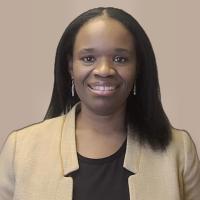To help autistic students thrive in school, building on students’ individual strengths and foundations is the best way to set goals and establish what assessments, supports, and interventions are needed, explains Ebony Holliday, PhD, assistant director of Community Programs at Kennedy Krieger Institute’s Center for Autism Services, Science and Innovation (CASSI). This is best accomplished though a team approach that includes the teachers, special education specialists, speech-language pathologists, and, of course, the families and students themselves.
This video appears in:
Transcript
I think when we’re talking about specific needs of autistic students in schools, one of the first things I’ll say is the importance of individualization and really making sure that we know what those strengths are of the child, that we know what we’re trying to teach, what our goals are with them as well, and really building on those strengths and those foundational skills that they already have. So if that’s something, if we’re looking at things like language or communication, we want to also make sure that we’re building a team around them. So we’re including, for example, the speech language pathologist from the school. We’re including a teacher, a special education teacher, if relevant as well, where we’re coming together and as a team determining what do we want to teach, what are the goals? And of course, the parent and the family is also a key member of that team.
And so we want to make sure that we have everyone’s input as we decide what those goals should be as we’re developing, perhaps for some students, an IEP plan, or maybe it might be a 5 0 4 plan as well, to support the different needs that are going to impact education. So I’d say the first step is to make sure that that team is on the same page, that we know that we’ve done an assessment or an evaluation, so we know what those baseline skills are, and then we can really collaborate and plan on those strategies to put into place to really build those educational skills that are going to be necessary.
